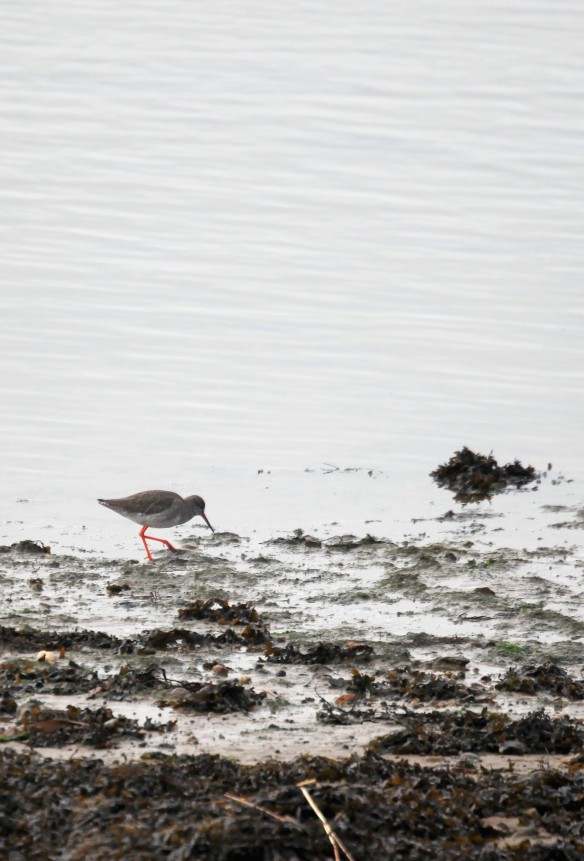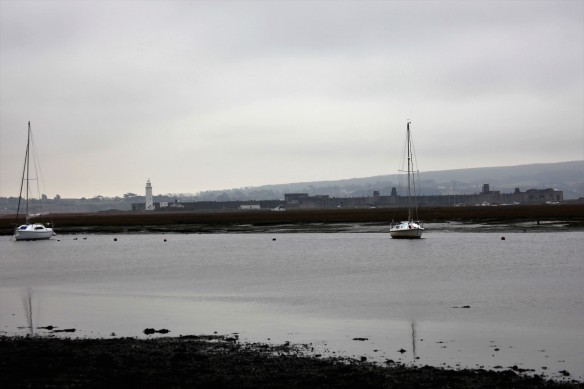CLICK ON IMAGES TO ENLARGE. THOSE IN GROUPS ACCESS GALLERIES WHICH CAN BE VIEWED FULL SIZE.
Today dawned dull and dry, so Jackie and I took an early drive to Keyhaven harbour and ambled along the sea wall.
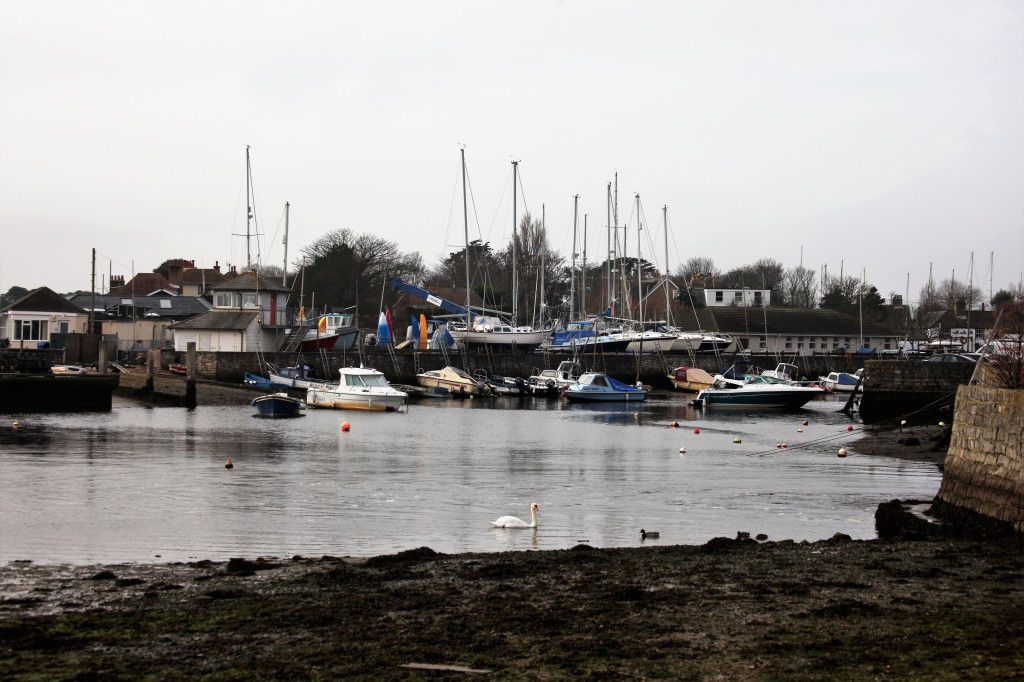


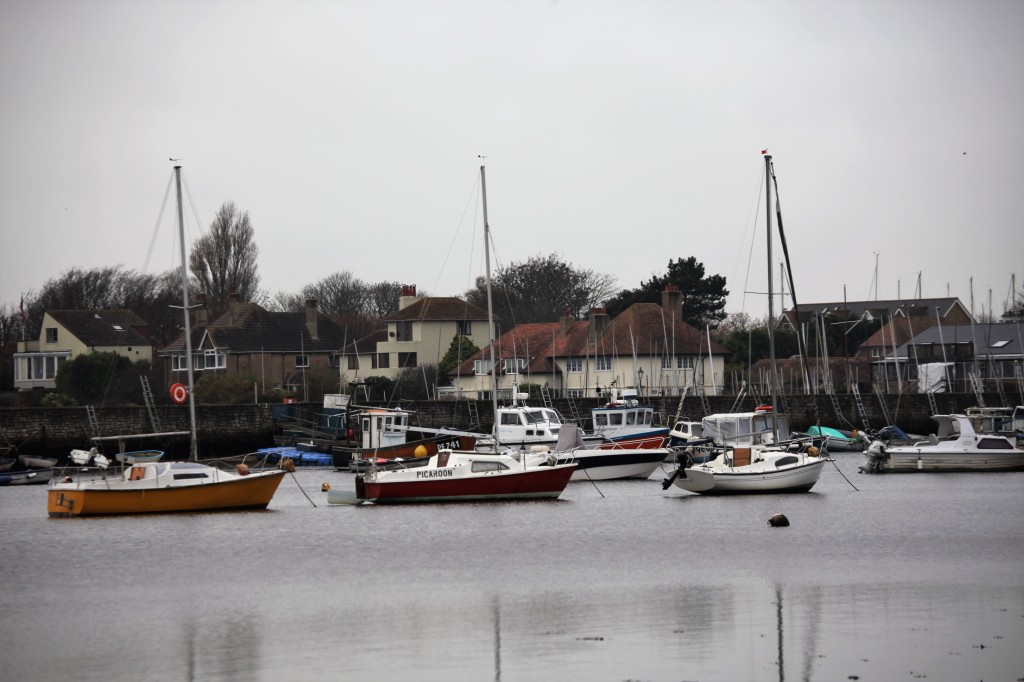


Many boats were peacefully moored after the recent gales,
although one looked a bit of a wreck.



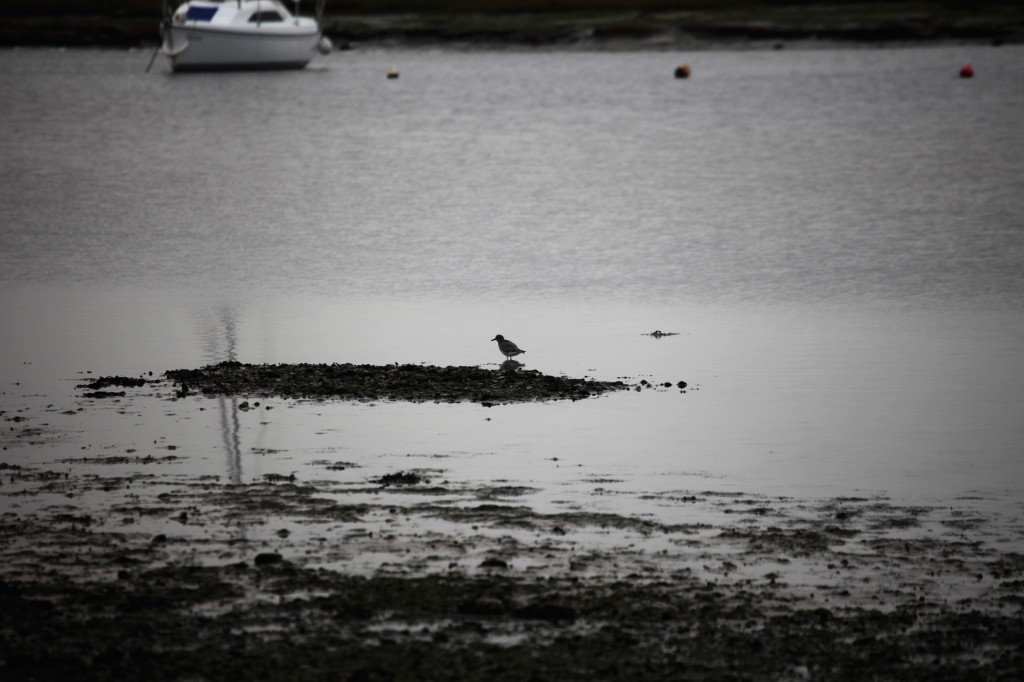






Except when silhouetted against the grey waters, well camouflaged wading birds, picking their way among pebbles and seaweed in the shallows, scuttled to and fro, pausing to probe promising crevices.
I can recognise swans and a cygnet,
and I am fairly confident that this is a redshank, and that many of the others will be the same, but for clear identification I will need a little help from my birding friends.



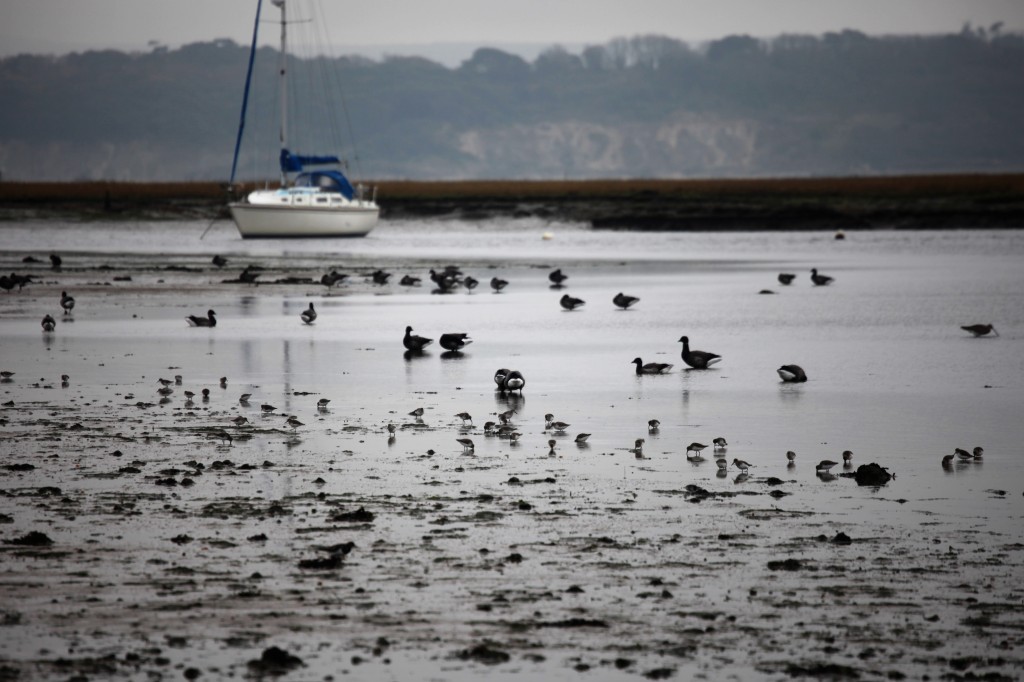

I imagine that these are more overwintering Brent geese that we saw at Lepe, but I am not sure. In the foreground of the landscape photographs are many more of our own waterfowl.


Quite a few birdwatchers walked along the wall with their dogs. Unfortunately there was evidence that some owners bring their pets out to empty them, as we put it.
Hurst Castle and its lighthouse were visible through the haze.
The website of this historic building tells us:
“The History of Hurst Castle
Hurst Castle is situated at the seaward end of the shingle spit that extends 1.5 miles from Milford-On-Sea. The end of the spit, only three-quarters of a mile from the Isle of Wight, and the views from the top of the centre keep are spectacular.
Hurst Castle was the perfect location to defend the western approach to the Solent. The castle was built by Henry VIII as one of a chain of coastal fortresses and was completed in 1544.
Charles I was imprisoned here in 1648 before being taken to London to his trial and execution.
The castle was modernised during the Napoleonic wars and again in the 1870’s when the enormous armoured wings were constructed. Two of the huge 38-ton guns installed in the 1870’s can be viewed in their casemates.
During World War II, Hurst was manned with coastal gun batteries and searchlights.
Since the castle has been opened to the public many more exhibits and exhibitions have been installed, including the Trinity House lighthouse museum.”
On our way from Keyhaven to Hurst Spit, Jackie spotted a pair of mittens fitted on the lichen-covered limb of a bare tree. Although the slow-growing pale green organism suggests that its host is fairly elderly, I think the gloves have not been placed there to keep it warm, but to alert the parents of a small child who now has cold fingers.
When we passed them earlier, the Isle of Wight and The Needles had been invisible. Just before noon, the emerging sun revealed them.
Steamed syrup pudding and custard followed Jackie’s spicy paprika pork with wild rice and green beans for our dinner this evening. She drank Hoegaarden and I drank Séguret Côtes du Rhone Villages, 2014.



